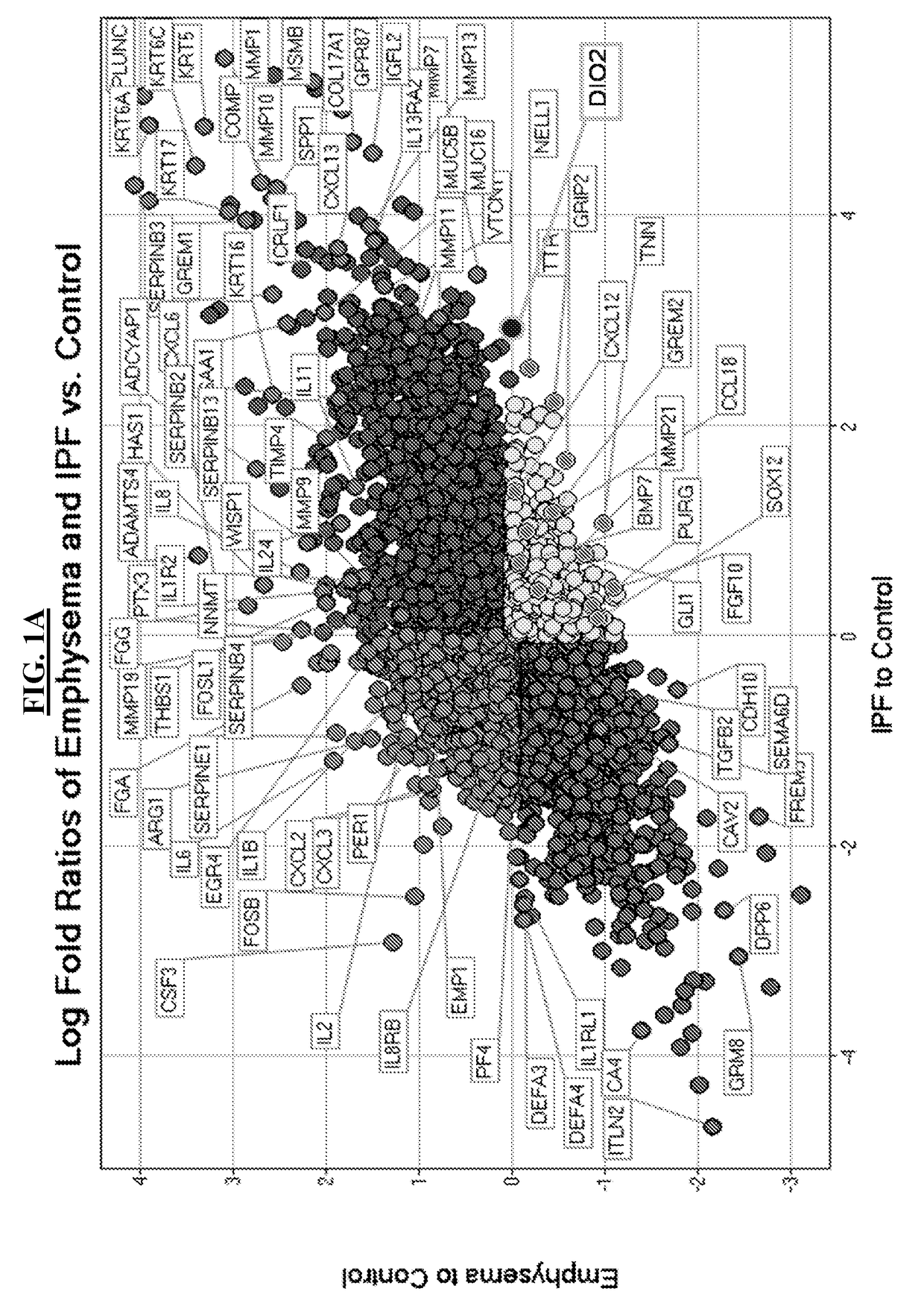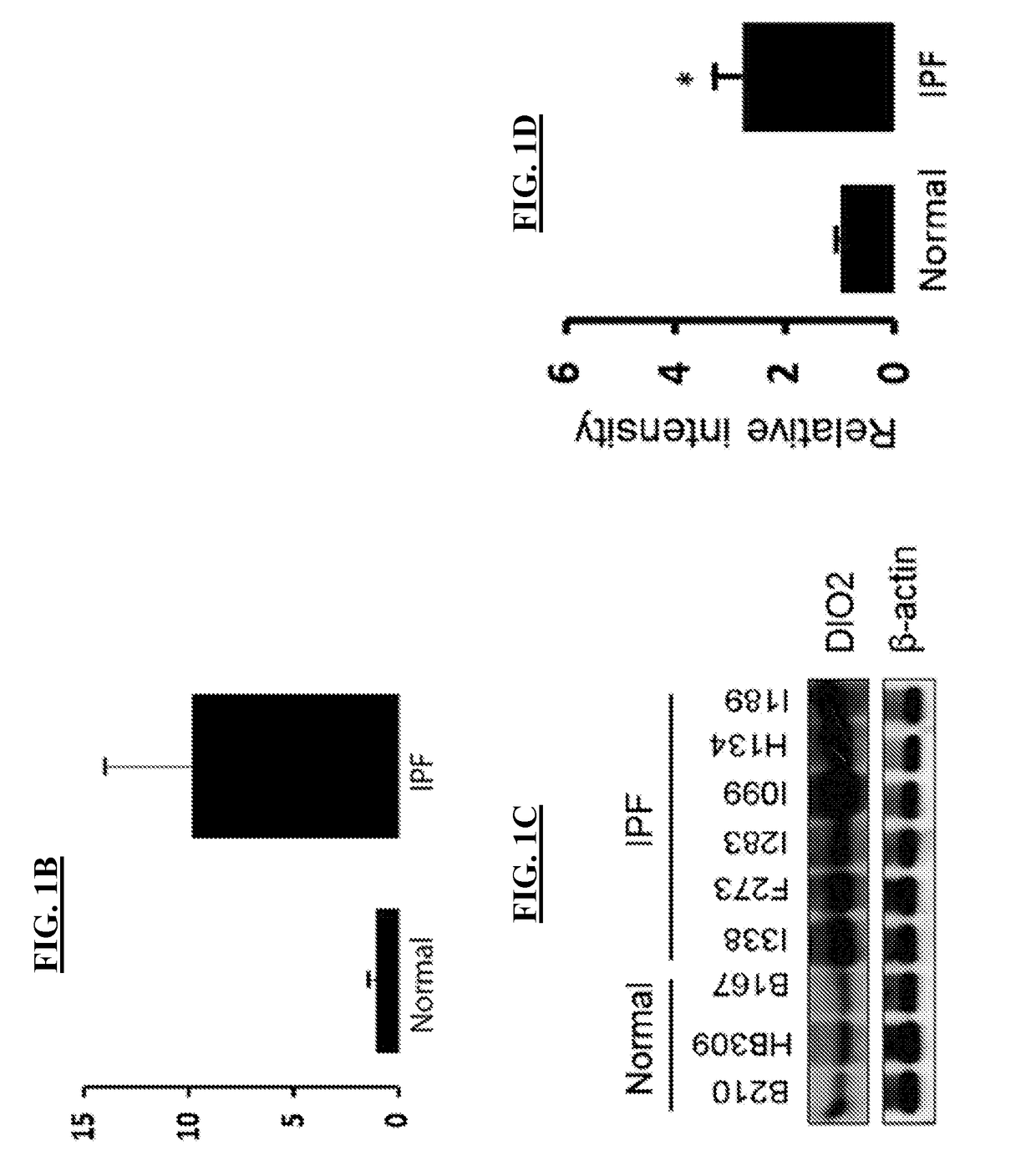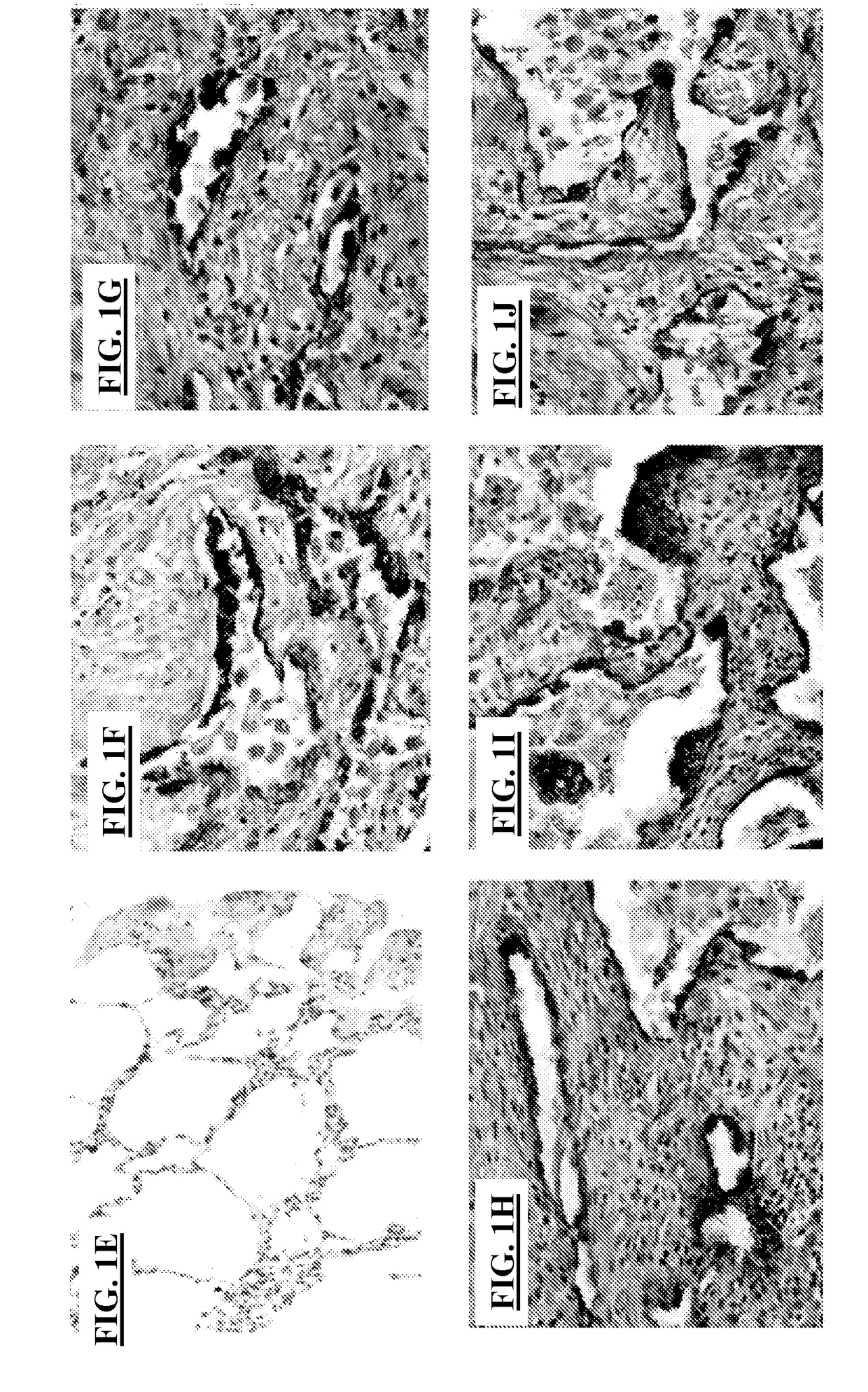Novel methods of treating or preventing fibrotic lung diseases
a fibrotic lung disease and fibrotic lung disease technology, applied in the direction of pharmaceutical delivery mechanism, medical preparations, powder delivery, etc., can solve the problems of affecting the quality of life of patients, unable to achieve the effect of any agent, and unable to achieve significant effect of patient survival
- Summary
- Abstract
- Description
- Claims
- Application Information
AI Technical Summary
Benefits of technology
Problems solved by technology
Method used
Image
Examples
example 1
ession Analysis and Validation Experiments
[0108]DIO2 is an enzyme that catalyzes the conversion of the pro-hormone T4 into its potent derivative T3, which binds with high affinity with the nuclear thyroid hormone receptor and influences the expression of an entire gene network involved in cellular metabolism and stress response.
[0109]High-throughput gene expression analysis using microarray platforms in 303 tissue samples from patients with IPF derived from LTRC indicated that type II iodothyronine deiodinase (DIO2) is one of the most upregulated genes that clearly differentiated patients with IPF from controls and subjects with emphysema (FIGS. 1A-1K).
[0110]Gene expression data (FIGS. 1A-1B) were further validated on a protein level as indicated by immunoblot (FIG. 1C) and immunohistochemistry analysis, showing increased staining intensity within the alveolar epithelium surrounding areas of fibroblastic foci (FIGS. 1F-1J) compared to control lung specimens (FIG. 1E). In addition, D...
example 2
tal Model of Lung Fibrosis in DIO2 Knockout Mice
[0111]To further implicate DIO2 mRNA and protein upregulation in the pathogenetic cascade of lung fibrosis, DIO2 knockout were treated with bleomycin, which is an agent commonly used to cause lung fibrosis.
[0112]Mice lacking DIO2 developed more severe fibrosis following bleomycin intratracheal administration compared to controls, as assessed by dramatic increase in hydroxyproline content (FIG. 2A) and collagen expression, as evidenced by mRNA (FIG. 2B) and protein levels (FIG. 2C).
[0113]Histological and immunohistochemistry analysis using Masson's trichrome and a-smooth muscle actin demonstrated significantly increased collagen deposition (FIG. 2D) and myofibroblast differentiation (FIG. 2E) within lung interstitium in DIO2 knockout mice, as compared to wild type ones 14 days following bleomycin treatment, further corroborating earlier findings.
[0114]Similar results were obtained using propylthiouracil (PTU), a drug commonly used to tr...
example 3
ent of Bleomycin-Induced Lung Fibrosis
[0115]Intraperitoneal delivery of T4 in mice at dose of 50 mg / kg following bleomycin exposure led to a significant attenuation of the fibrotic process, as assessed both by reduction in fibrotic markers and structural changes within the fibrotic lung (FIGS. 4A-4G). However, there was no statistically significant reduction on the hydroxyproline content 3 or 7 days after T4 administration, while an increase in circulating T3 levels following T4 treatment was observed, implying potential increase in thyroid hormone.
PUM
| Property | Measurement | Unit |
|---|---|---|
| Frequency | aaaaa | aaaaa |
| Gene expression profile | aaaaa | aaaaa |
| Level | aaaaa | aaaaa |
Abstract
Description
Claims
Application Information
 Login to View More
Login to View More - R&D
- Intellectual Property
- Life Sciences
- Materials
- Tech Scout
- Unparalleled Data Quality
- Higher Quality Content
- 60% Fewer Hallucinations
Browse by: Latest US Patents, China's latest patents, Technical Efficacy Thesaurus, Application Domain, Technology Topic, Popular Technical Reports.
© 2025 PatSnap. All rights reserved.Legal|Privacy policy|Modern Slavery Act Transparency Statement|Sitemap|About US| Contact US: help@patsnap.com



